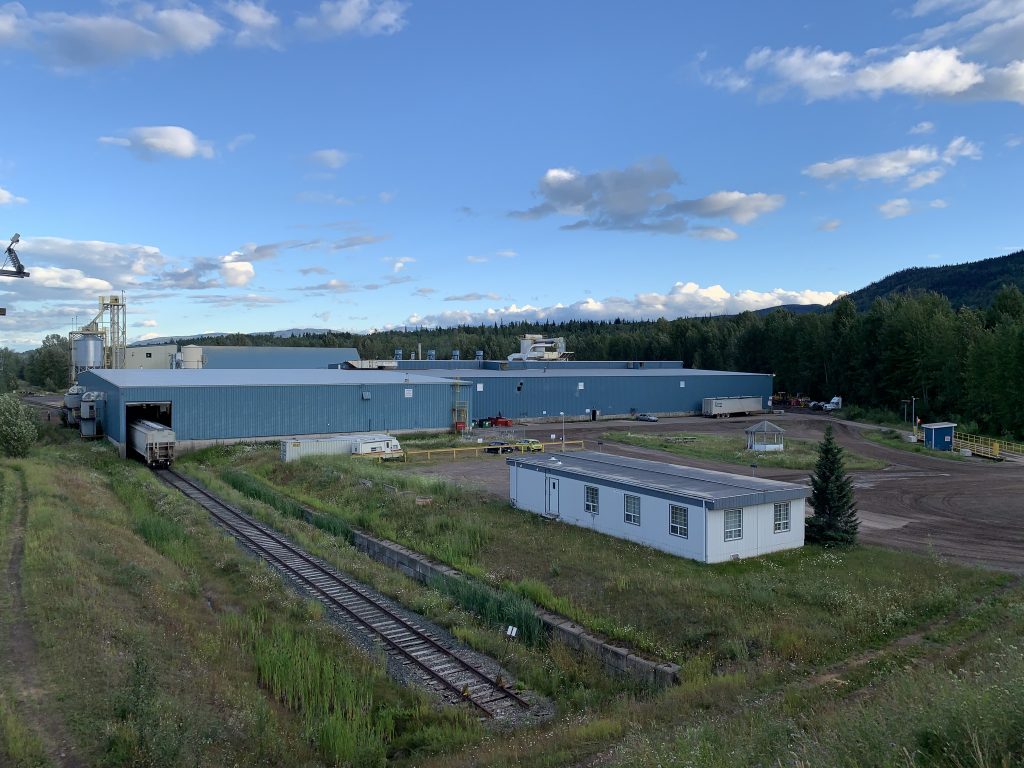
FESBC funding helps recover harvest residuals for Pinnacle’s Smithers plant
August 27, 2020
By
Ellen Cools
 Pinnacle's Smithers, B.C. plant. Photo courtesy FESBC.
Pinnacle's Smithers, B.C. plant. Photo courtesy FESBC. Thanks to $1.2 million in funding from the Forest Enhancement Society of BC, residual fibre from the Bulkley Timber Supply Area near Smithers, B.C., that would otherwise be burned because of the uneconomic haul distance to Pinnacle Renewable Energy’s Smithers pellet plant is being recovered.
The funding helps bridge the cost of hauling the fibre to the Smithers plant. This improves air quality because turning wood fibre into wood pellets is cleaner than burning wood piles in open air, and helps Pinnacle’s customers offset their fossil fuel consumption.
“In recent years in the Bulkley Valley, there has been no feasible end destination for any pulp logs or bio-logs, forcing licensees to burn high amounts of fibre that could have been used to produce energy,” said Josh McQuillin, superintendent of biomass for Pinnacle Renewable Energy, in a statement. “Through this funding we were able to utilize nearly 90,000 cubic metres of fibre that would otherwise have been piled and burned.”
Pinnacle is working with Pacific Inland Resources, a division of West Fraser, to recover residual fibre left behind after harvesting in West Fraser’s license area.
“Harvest residuals can add challenges where the logistics costs of transporting fibre from cut blocks to our plant are difficult, or where storage space is limited, as is the case with Smithers,” said Jason Fisher, vice-president of fibre, Pinnacle Renewable Energy, in the press release. “We know that by turning harvest residuals into pellets we are putting the carbon in that fibre to good use.”
The funding has also helped Pinnacle find longer-term storage for an increase in fibre supply.
Print this page